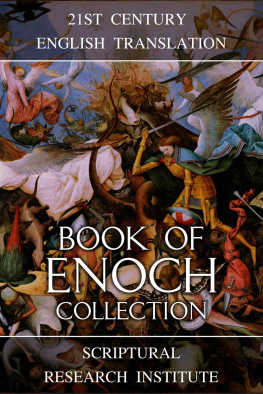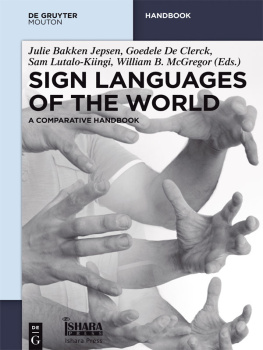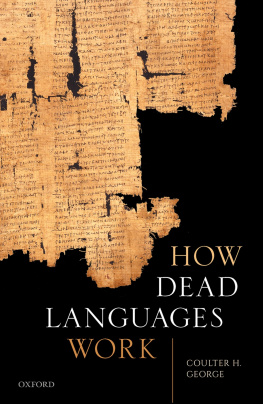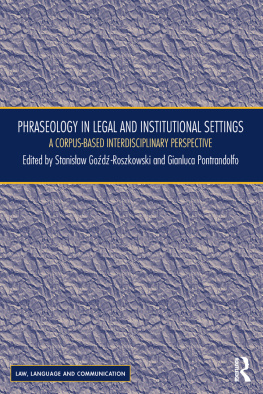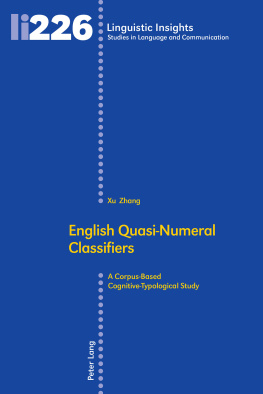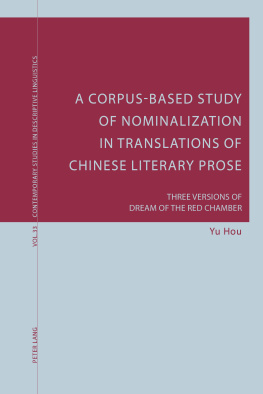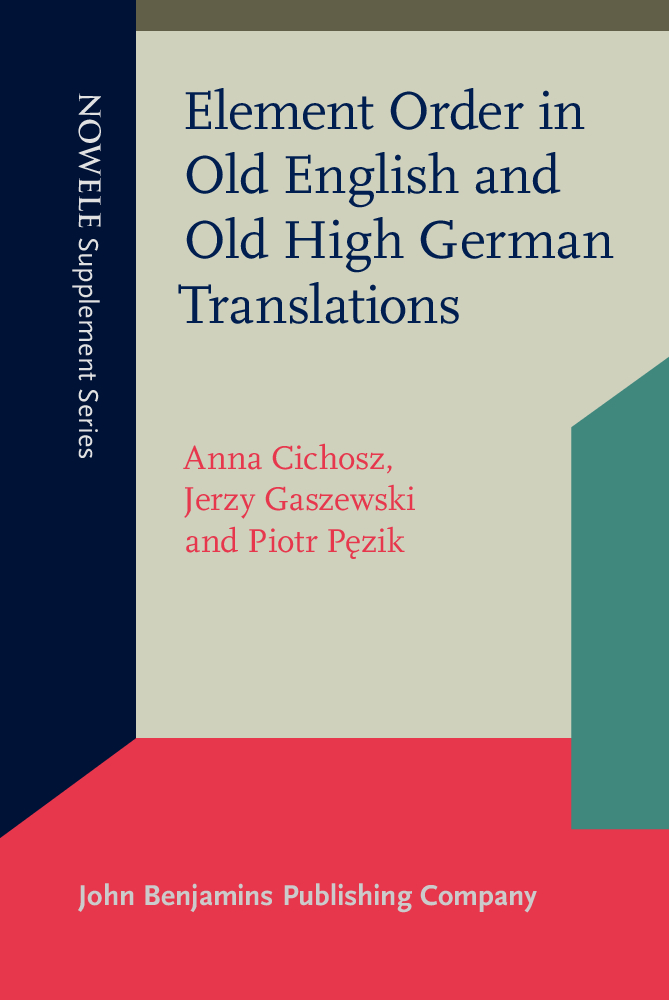

Element Order in Old English and Old High German Translations
Anna Cichosz University of d Jerzy Gaszewski University of d Piotr Pzik University of d
doi: 10.1075/nss.28
ISBN: 978 90 272 6623 1 (ebook)
Cataloging-in-Publication Data available from Library of Congress:
LCCN 2016038790
2016 John Benjamins B.V.
No part of this book may be reproduced in any form, by print, photoprint, microfilm, or any other means, without written permission from the publisher.
John Benjamins Publishing Company https://benjamins.com
John Benjamins Publishing Company
Amsterdam/Philadelphia
Table of contents
List of figures
List of tables
Chapter 1
Chapter 2
Chapter 3
Chapter 4
Chapter 5
Chapter 6
Chapter 7
Chapter 8
Chapter 9
Preface
This book is the end product of the project A corpus-based study of the influence of Latin syntax on the word order of selected Old English and Old High German translations , carried out by Anna Cichosz, Jerzy Gaszewski, Piotr Pzik and Maciej Grabski at the University of d, and supported financially by the National Science Centre (Polish Narodowe Centrum Nauki, grant no. N N104 379140). The idea behind the project was to conduct a comparative study of Old English and Old High German element order, and to base the investigation on translated material. In this way, we intended to establish some common ground between the two languages, limiting the apparent incomparability of Old English and Old High German textual records.
In the course of the project, we analysed the degree of Latin influence on the element order of the translations included in our study corpus. We wanted to measure and assess the relative dependence of the texts on their Latin sources, identify element order patterns independent from Latin, and compare Old English and Old High German on the basis of such independent structures. Therefore, the main aim of this book is to produce a descriptive comparison of the two languages, based on a reliable corpus of texts, with consistent control for the potential influence of Latin, which was possible thanks to the ENHIGLA parallel corpus of source and target texts created for the purpose of our analysis.
Naturally, the choice of the element order phenomena discussed in this book is not exhaustive. We decided to focus on the basic clause types and patterns typically discussed in the literature in the context of Old English and Old High German. Space did not permit us to cover every interesting aspect of Old Germanic syntax, but we believe that the analysis of the topics discussed in Chapters allows us to draw some general conclusions about the similarities and differences between the languages, which are presented in the final chapter of the book.
There are many people who supported us in this undertaking. First and foremost, we would like to thank the reviewers of this book, Robert A. Cloutier and Oliver Schallert, as well as the editors, Hans Frede Nielsen and John Ole Askedal, whose comments, suggestions and numerous valuable observations allowed us to improve the initial version of the manuscript. At an even earlier stage, various parts of what has become this book were presented as papers at conferences, including those of the ICEHL and MESS series. We are certain that the comments and questions from the audiences helped to guide our work in the right direction. We are grateful to Maciej Grabski, who assisted us in the syntactic annotation of texts for the ENHIGLA corpus, Krzysztof Tomasz Witczak for his help with the analysis of the Latin sources, Maciej Cichosz for the Excel formula which saved us hours of work, Rafa Molencki for his constant and friendly support as well as Ewa Waniek-Klimczak, Barbara Lewandowska-Tomaszczyk and Piotr Stalmaszczyk for their encouragement. We also wish to thank our families for their understanding during this extremely busy time; we do realise that we spent too many weekends, evenings and holidays working on this book. Finally, we would like to express our gratitude to Martin Hinton, who patiently proofread the whole text, fishing out all the clumsy passages, identifying places where our words did not form a logical whole, and adding countless commas to our text. All the remaining weaknesses of the book (including the few potentially missing commas) remain our own responsibility.
Chapter 1 Studying the element order of Old Germanic languages
1.1 Introduction
The syntax of Modern English is evidently different from that of Modern German, especially with regard to the order of clause elements (more commonly, but less precisely, known as word order). About a thousand years ago, in the Old Germanic period, the two sister languages were much closer and shared many syntactic characteristics. Yet, their rules for element order were no longer identical and one can notice interesting differences, which have not been systematically explored.
Both Old English and Old High German for OHG). However, individual authors have different approaches, make different theoretical assumptions and analyse texts of different kinds. As a result, their observations, conclusions and (sometimes) statistics are hardly comparable.
A number of works compare selected structures in the two languages (e.g. passive constructions in : 2223), which is a highly controversial assumption, in opposition to other studies.
It cannot be denied that there is an objective methodological problem in finding comparable textual material for the two languages (for details, cf. ). This book is a comparative study of element order based on translated texts only. This decision, however unorthodox it may seem at first, is dictated by the nature of the surviving texts. Since translations are the chief sources of information about OHG, we decided to use this type of text also for OE. In this way, we aim to minimise the problem of comparability. At the same time, we do realise that, because of the limited number of extant texts, the problem cannot be fully solved.
The aim of our study is to provide a thorough analysis of selected element order phenomena in OE and OHG translations, identifying areas of possible foreign influence and native patterns, and to compare the two languages on the basis of the latter. The secondary aim of the study is to assess the degree of syntactic dependence of the selected translations on their source texts. In order to achieve these goals, we have decided to base our investigations on a parallel corpus of texts, with translations and their source texts annotated at the phrase level and aligned at the clause level. The corpus enabled a direct quantitative analysis of element order patterns in the samples of texts selected for this study.
As far as methodology is concerned, our analysis is a data-driven descriptive comparison of the two systems. While we make use of insights from formal accounts of OE and OHG grammar, we do not follow any formalised approach ourselves. In the absence of comprehensive and reliable comparative works, we aim to identify and describe text-independent patterns of element order in the two languages, which will hopefully become a good basis for further investigations making use of various approaches.



